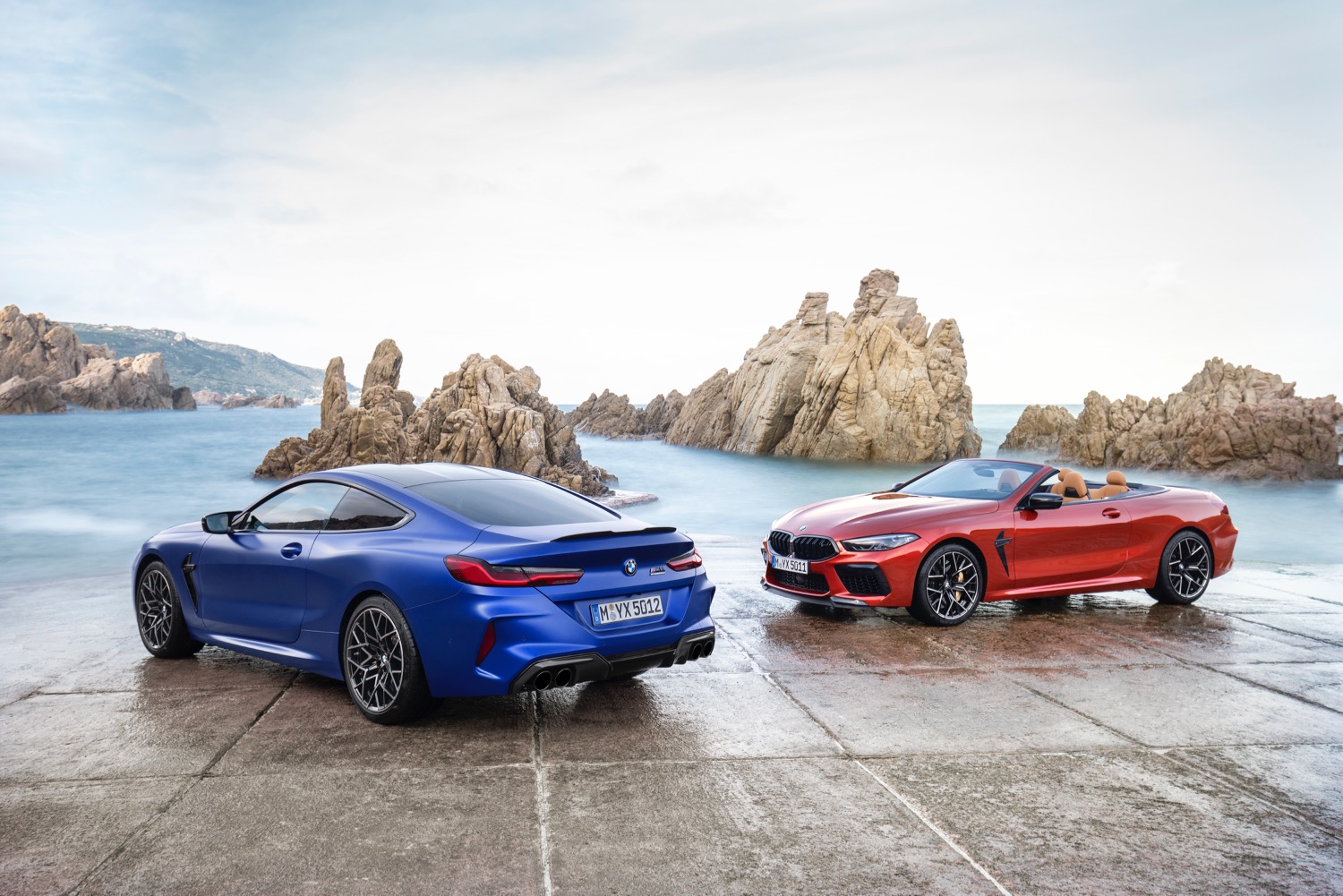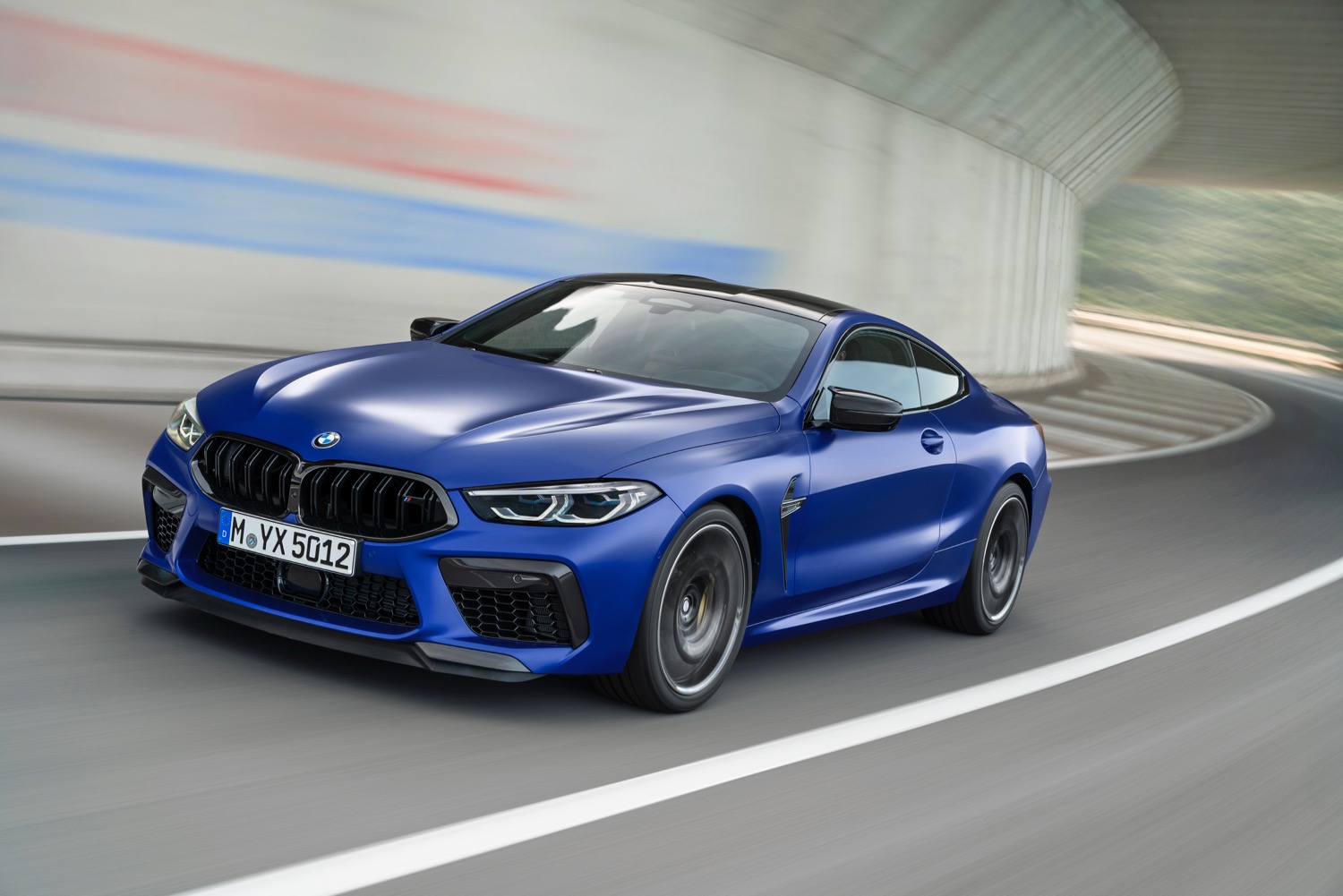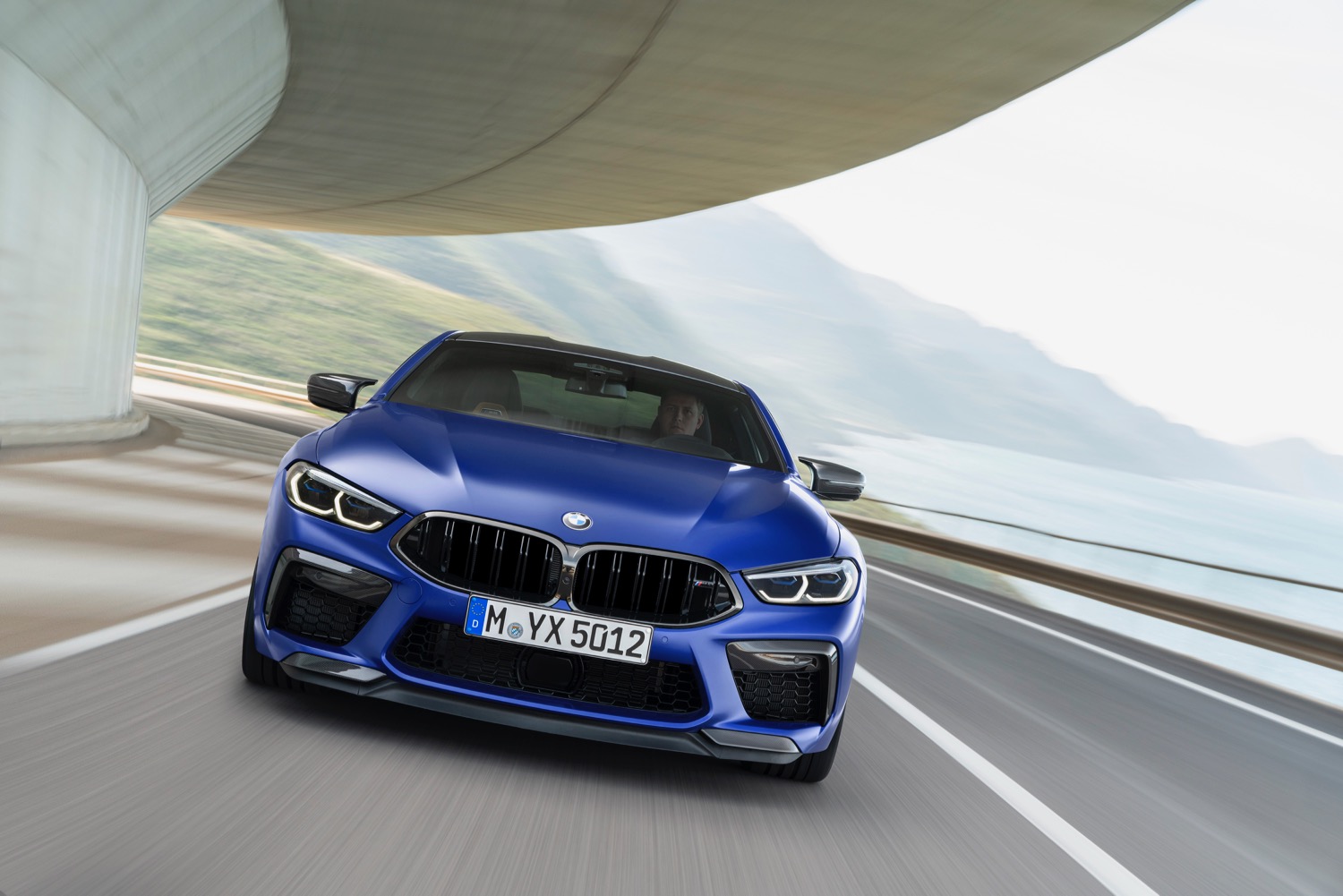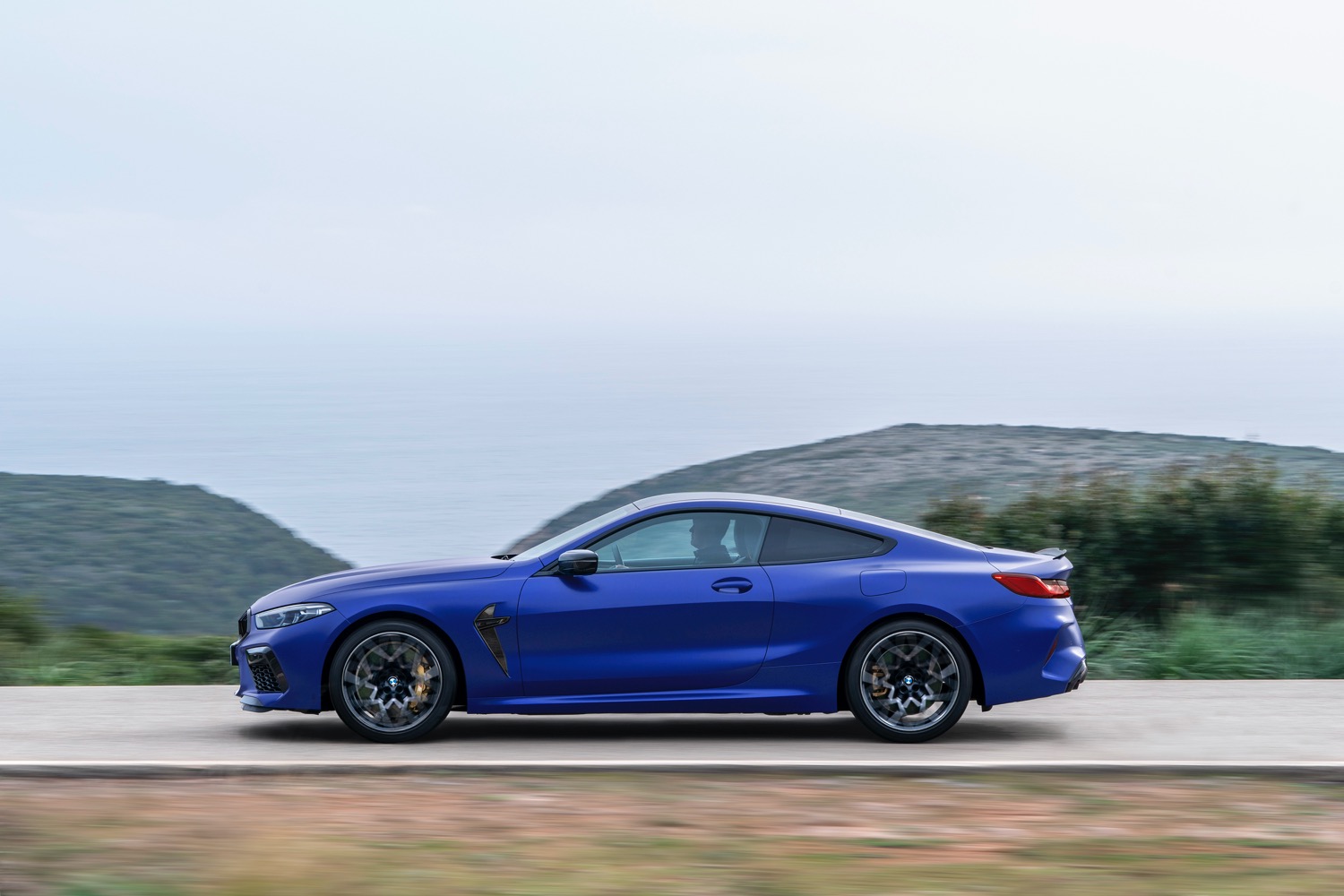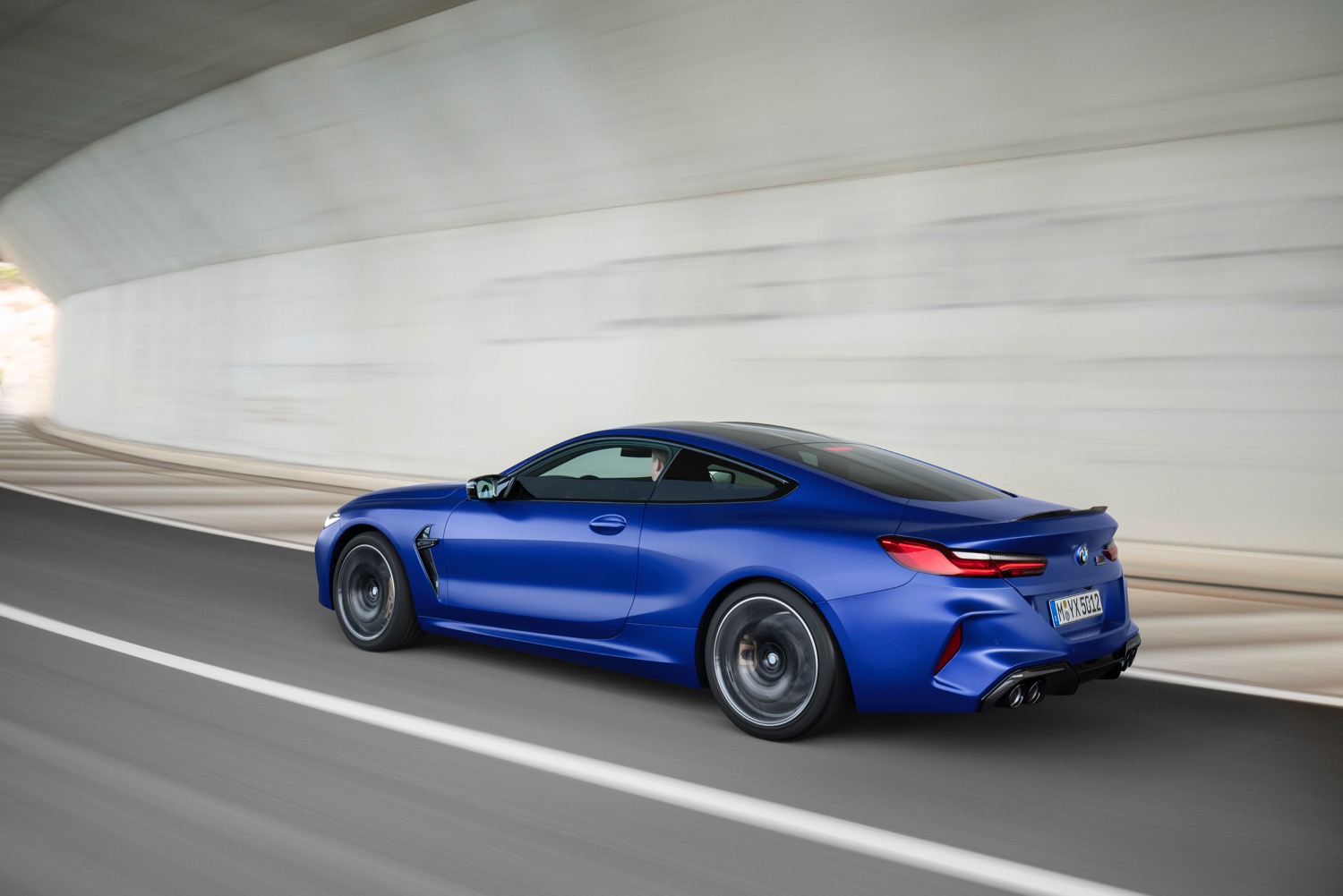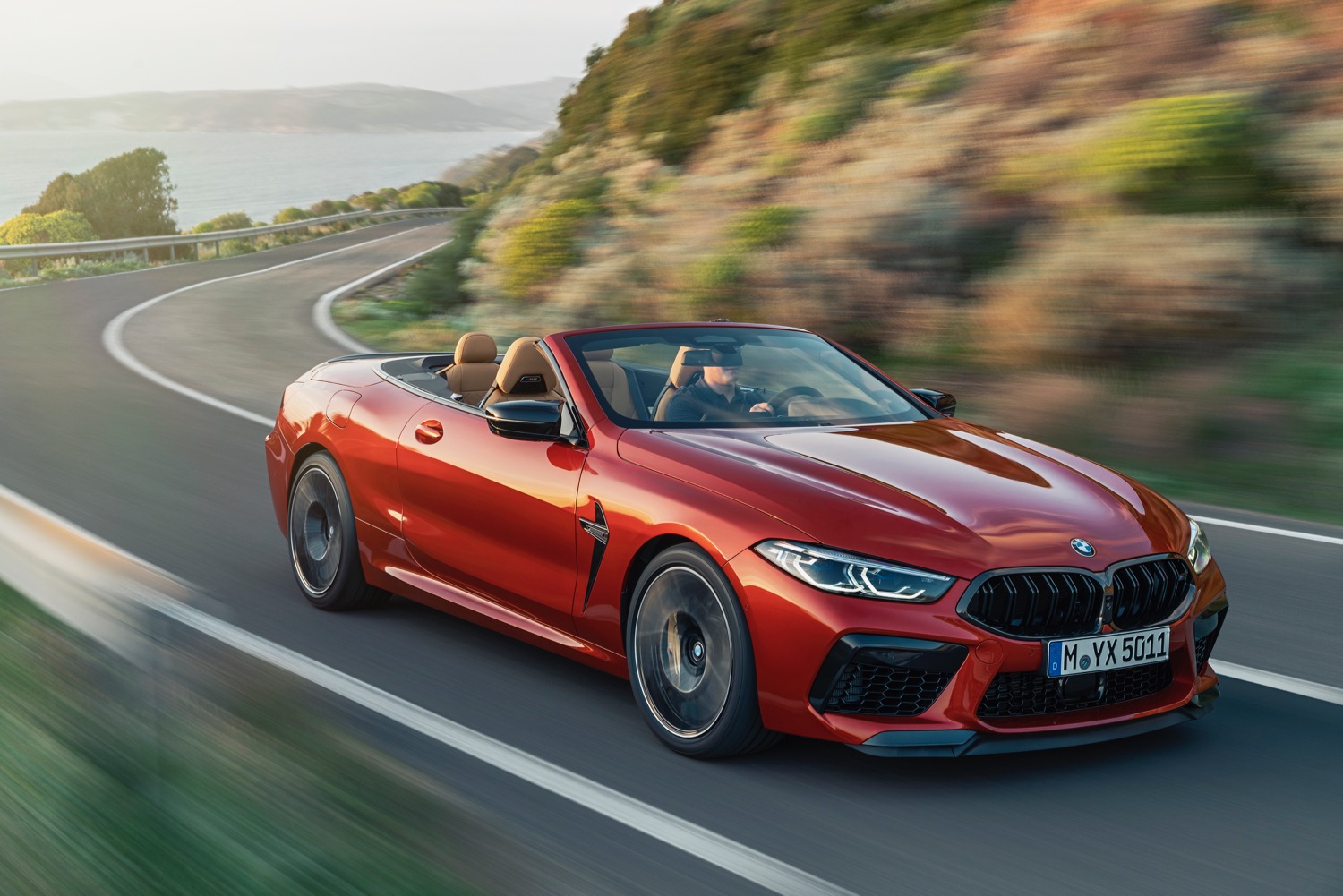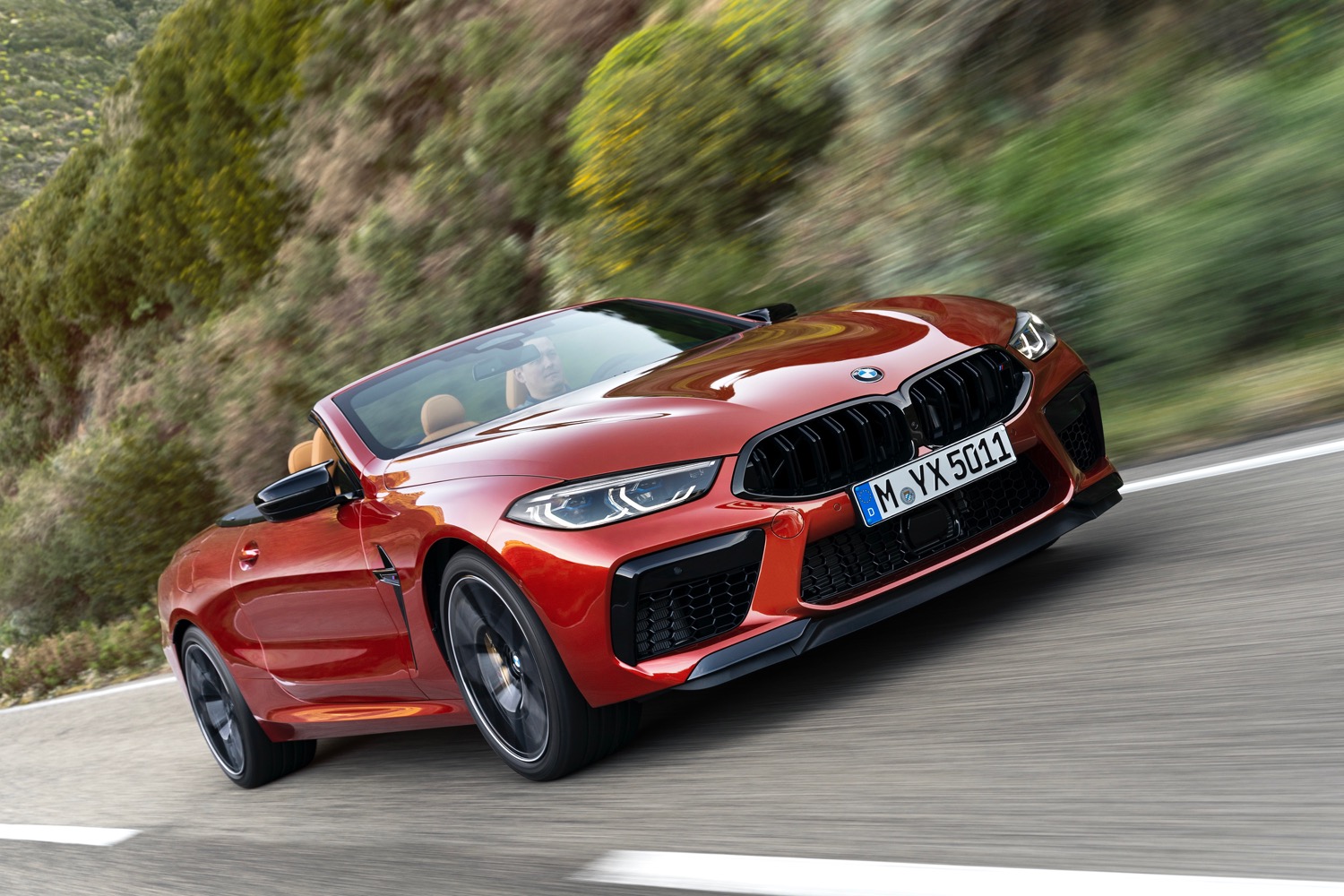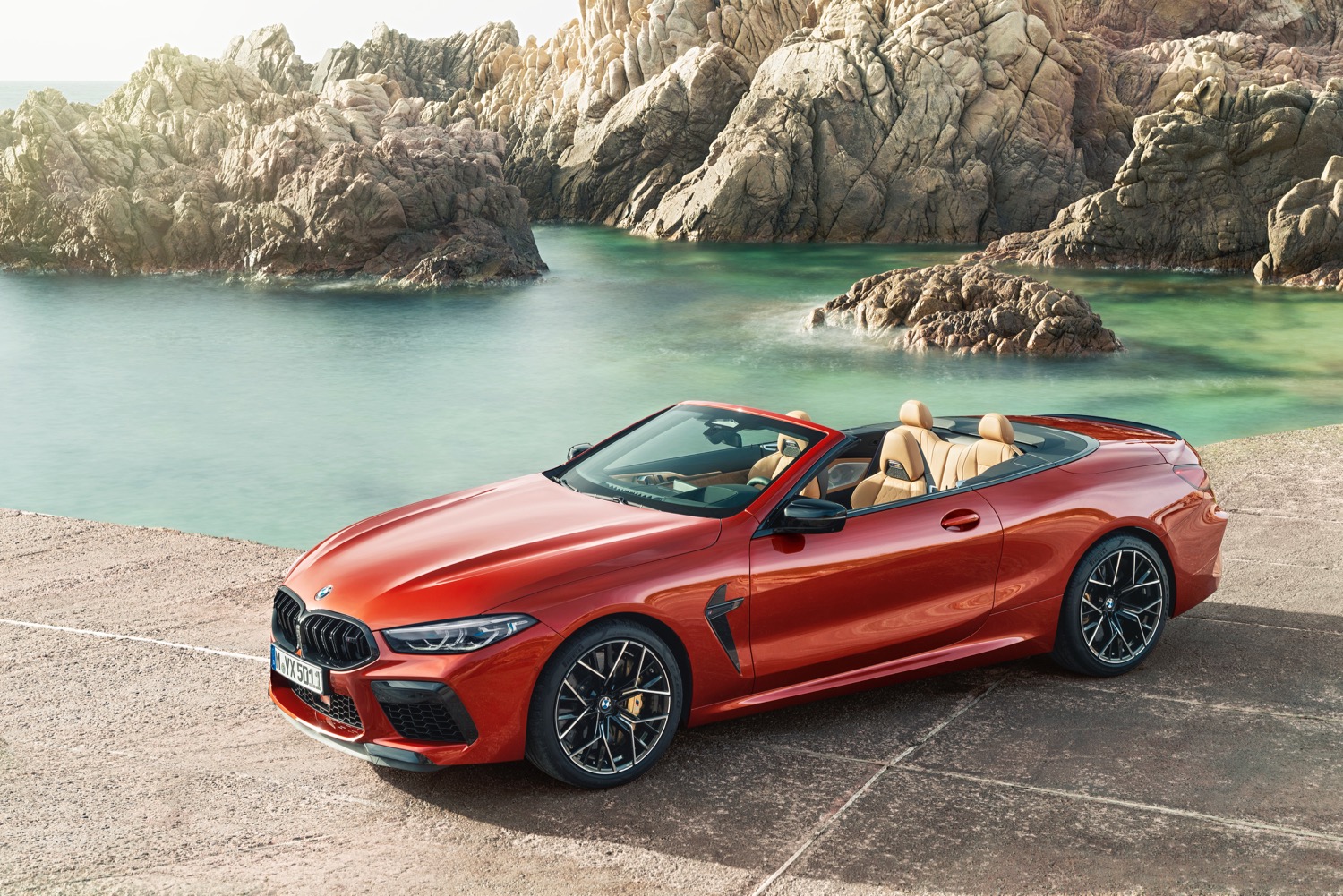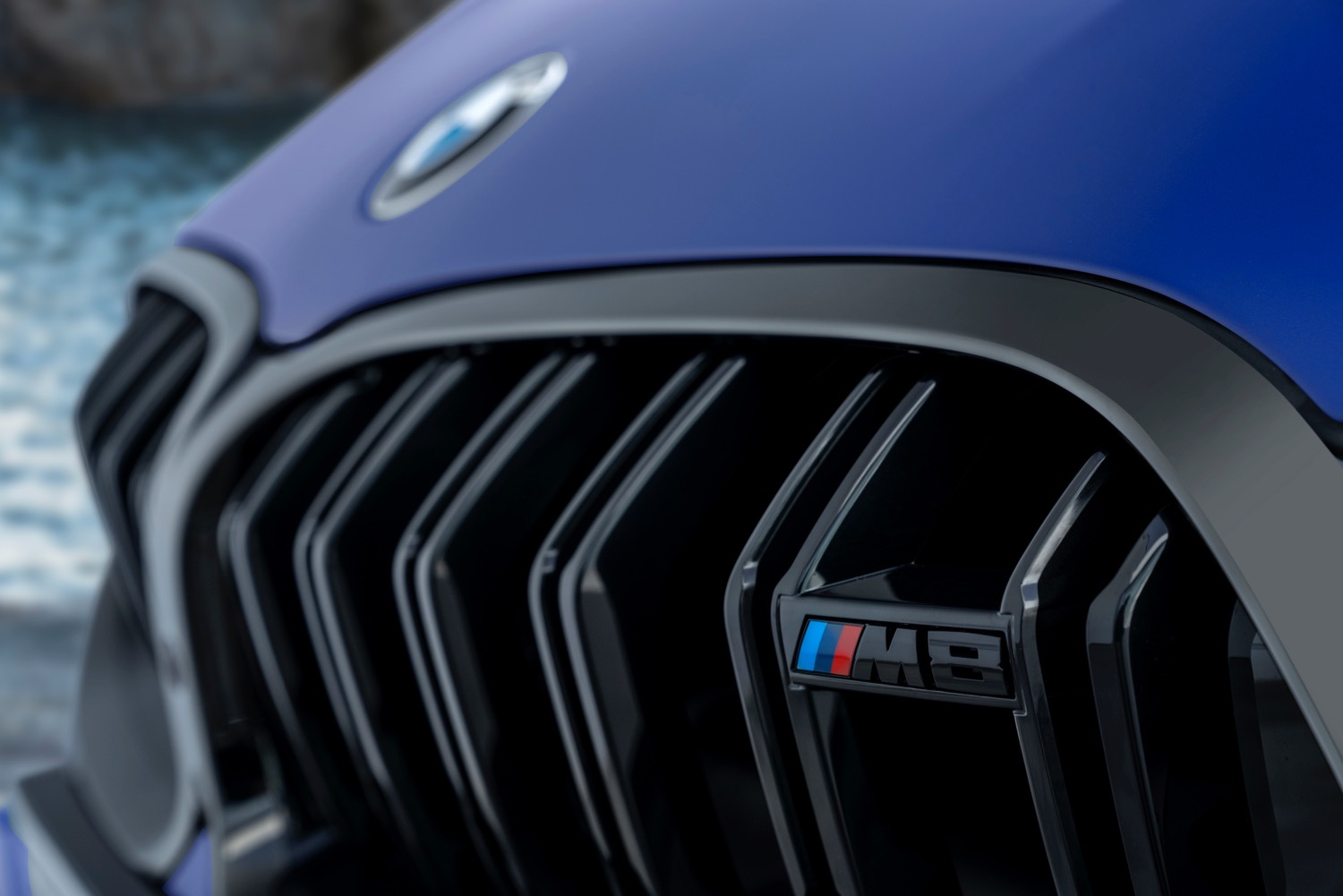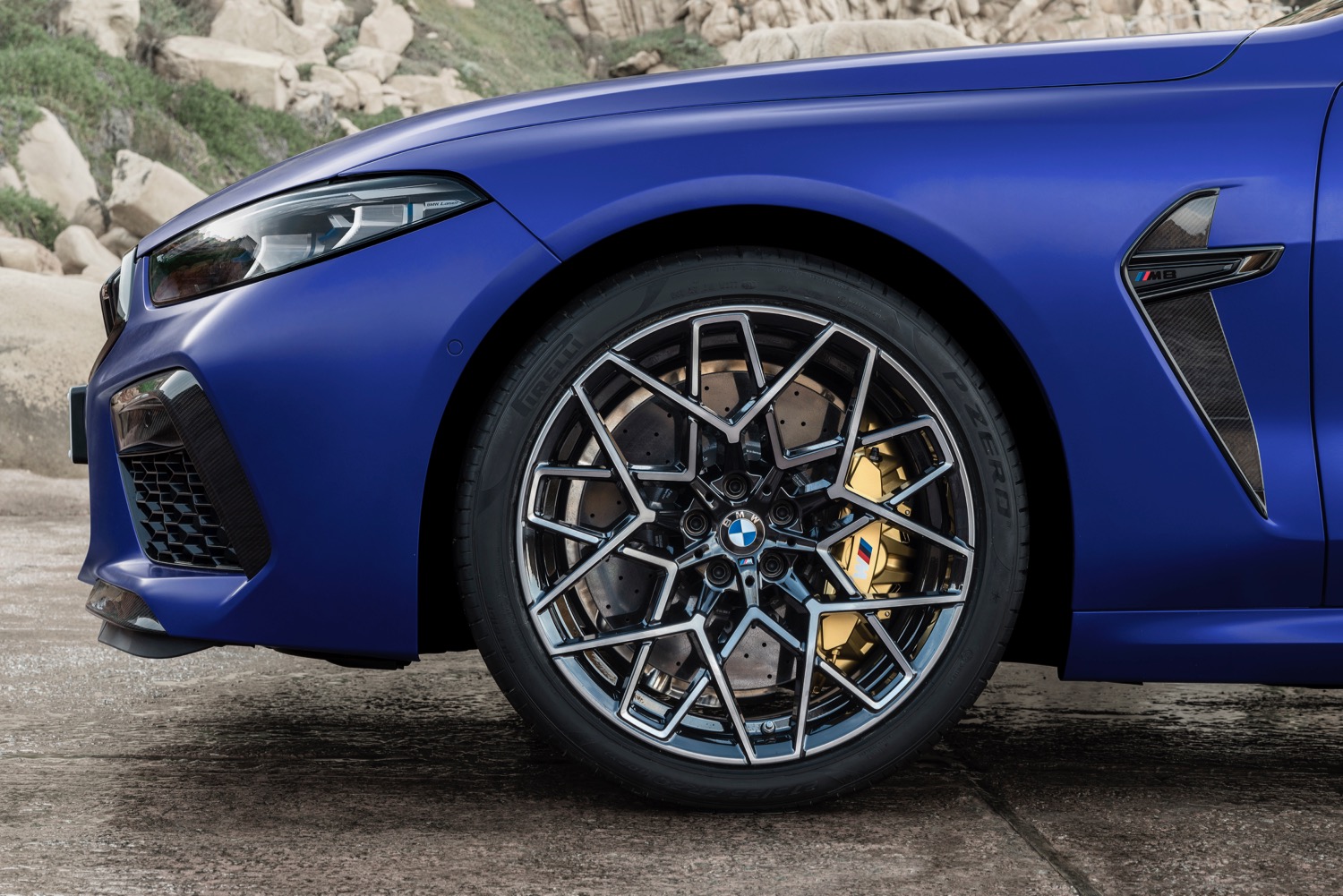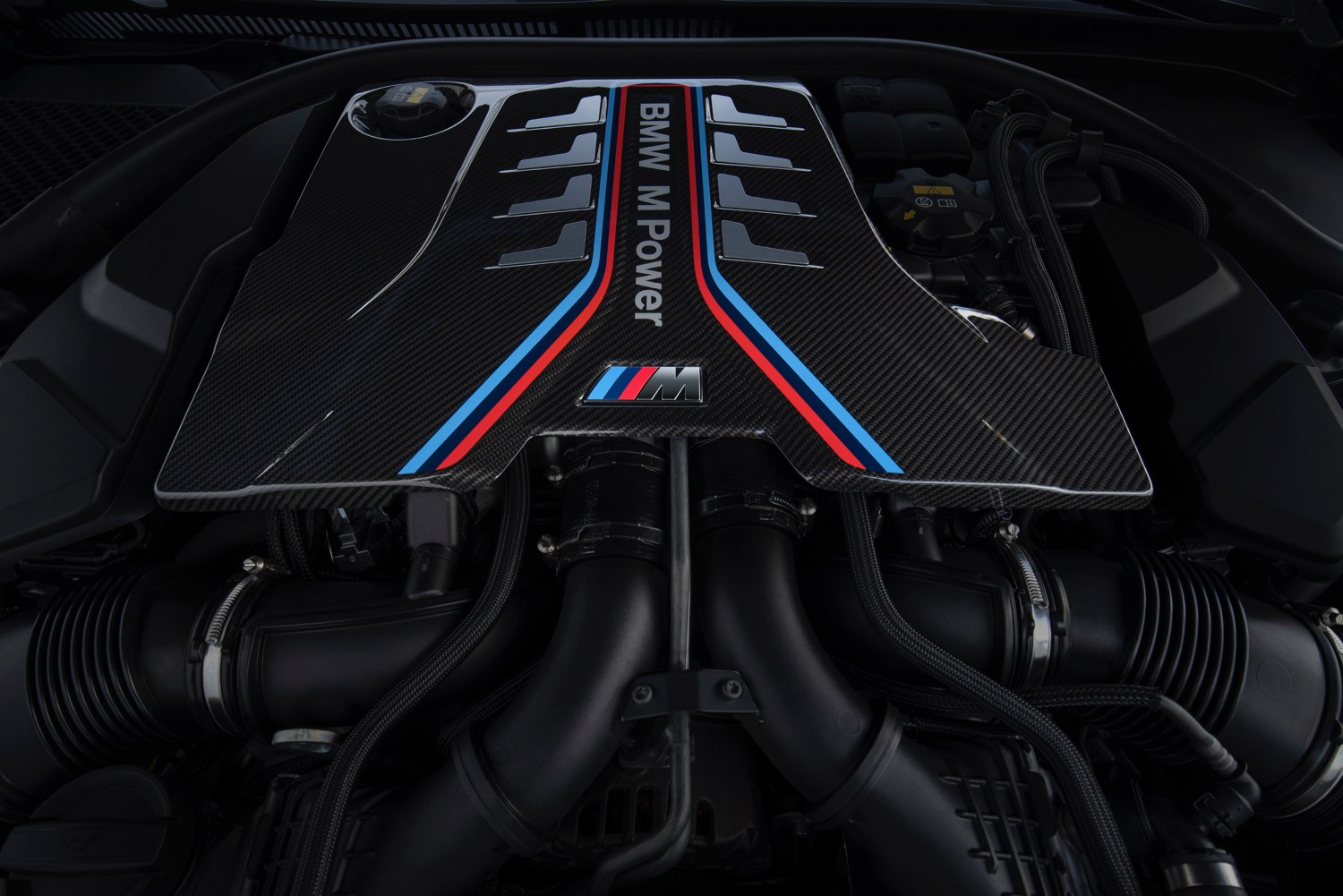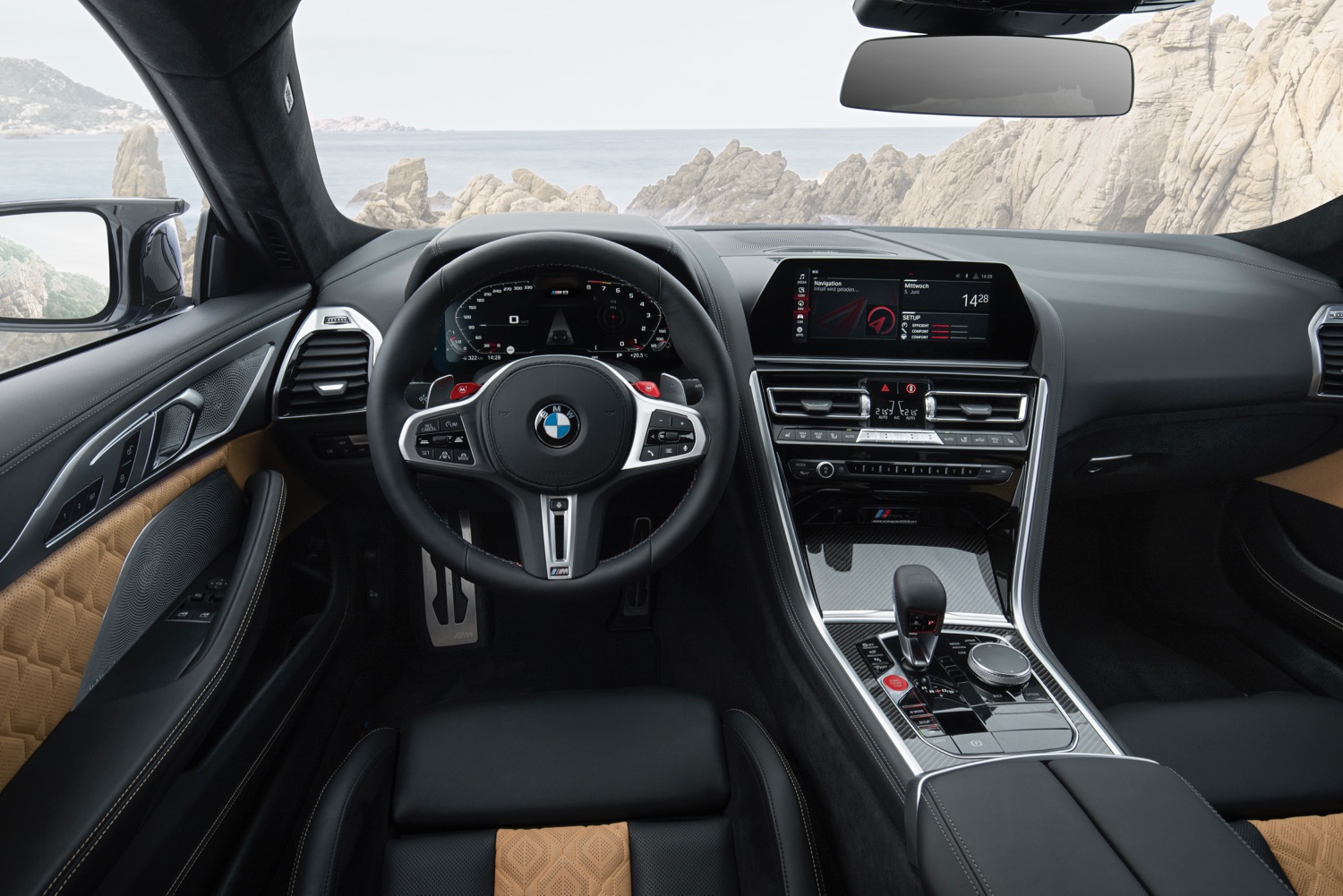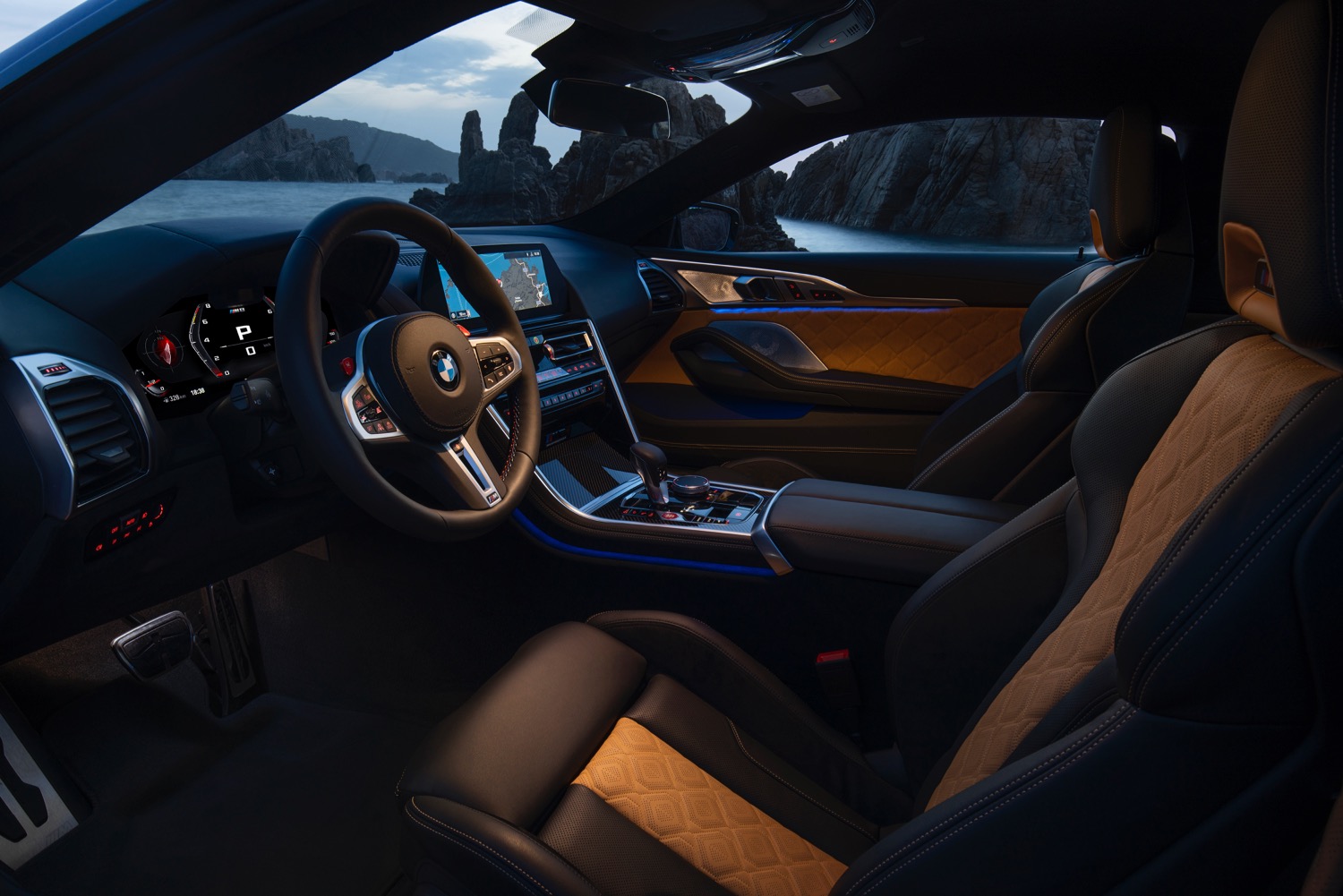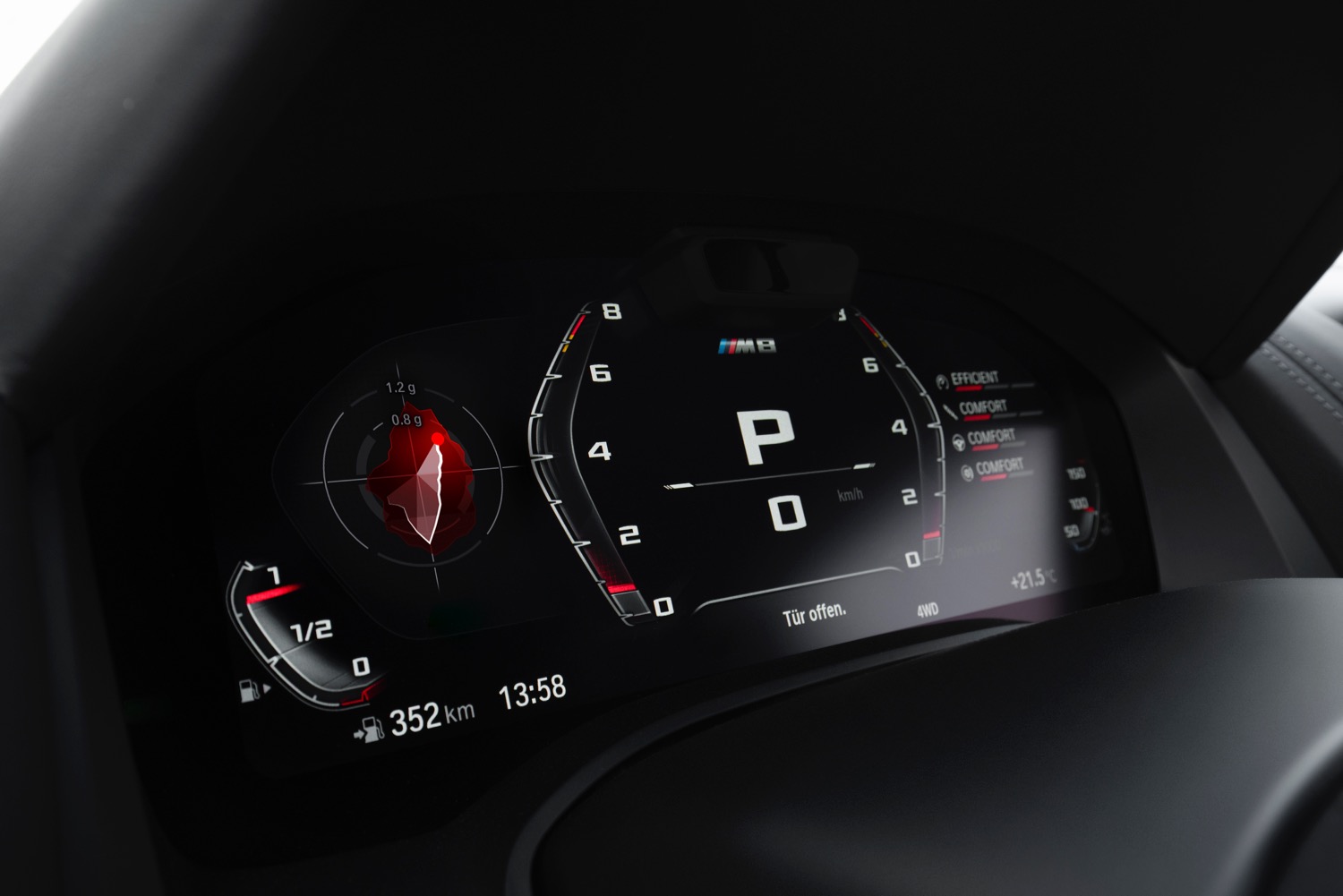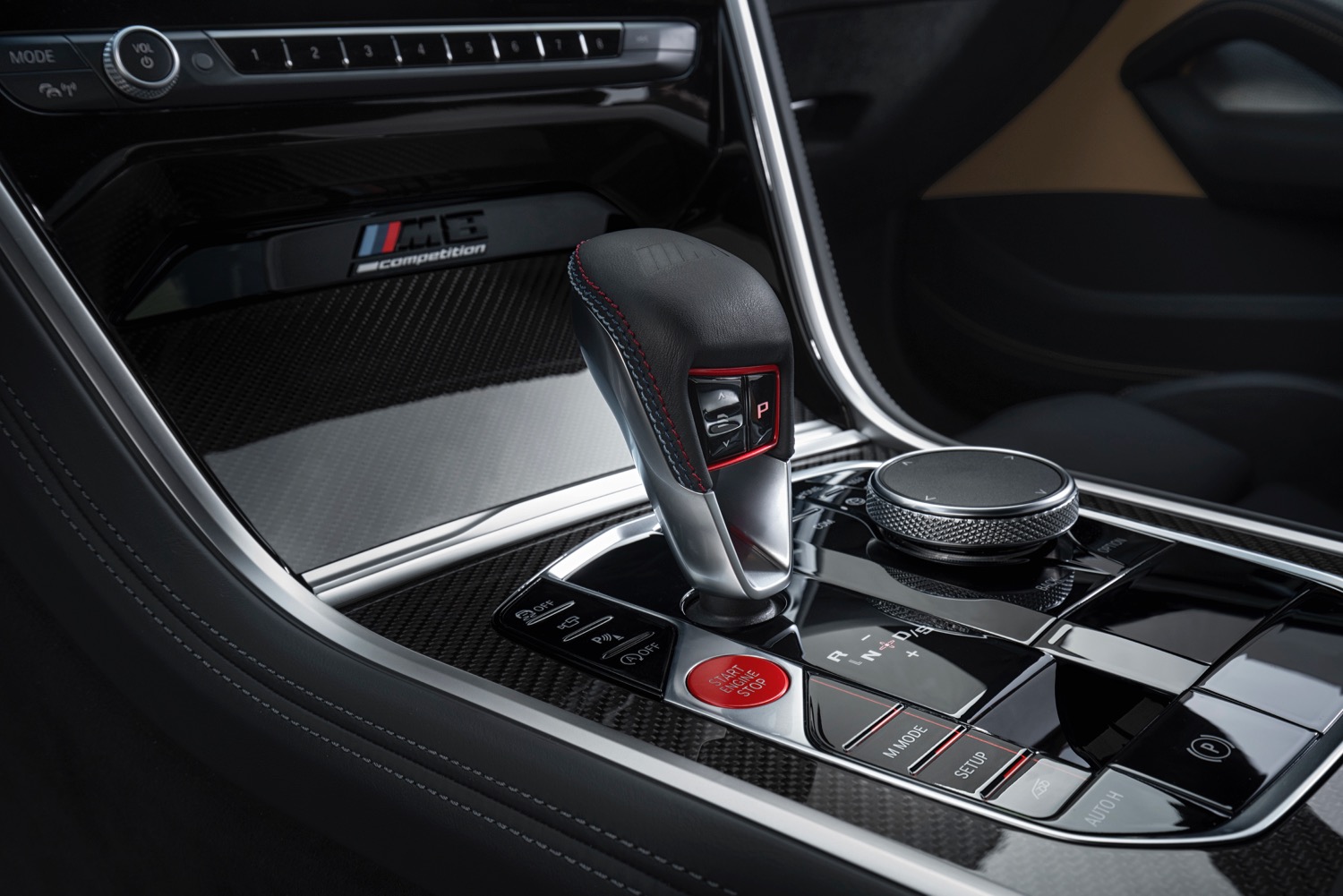When the reborn BMW 8 Series arrived, it was only a matter of time before a hotter M8 version showed up. It was such an obvious move that BMW didn’t even try to keep it a secret. The German automaker has been running M8 race cars for over a year, after all. But now the road-going M8 is finally here, and it looks like it was worth the wait.
Available as either a coupe or convertible, the M8 uses a 4.4-liter twin-turbocharged V8 that comes in two strengths. The standard M8 makes 600 horsepower and 553 pound-feet of torque, while the Competition model makes 617 hp, with torque output unchanged. BMW claims the standard M8 coupe will do zero to 60 mph in 3.1 seconds, while the convertible takes an estimated 3.2 seconds. The Competition coupe and convertible take 3.0 seconds and 3.1 seconds, respectively, according to BMW.
All M8 models come standard with an electronically limited top speed of 155 mph, but BMW will raise the limit to 189 mph as part of the M Driver’s Package. That also includes a round of training at one of BMW’s driving schools in Thermal, California, or Spartanburg, South Carolina. When you have over 600 hp available at the twitch of your right foot, some schooling is probably a good idea.
An eight-speed automatic transmission and all-wheel drive are standard equipment. The latter carries over from the BMW M5, meaning it allows the driver to disconnect the front axle and make the M8 rear-wheel drive. That option also deactivates the stability control, which should turn the M8 into a drift machine.
The M8 also gets the usual round of BMW M car chassis upgrades. Adaptive M Suspension constantly monitors everything from road conditions to steering input, making minute adjustments to suit. Competition models get firmer suspension settings. An M mode button resets various vehicle parameters to the driver’s preferences. A new brake-by-wire system improves responsiveness, and even lets the driver adjust how the brakes feel. It also saves 4.5 pounds over a conventional braking system, according to BMW. Every little bit counts, apparently.
Mildly more aggressive exterior styling and model-specific 20-inch wheels distinguish the M8 from lesser 8-Series models. Coupes get a standard carbon fiber roof, and Competition models get special lightweight wheels. On the inside, the M8 gets a reconfigurable dashboard display and head-up display. Competition models get a Track setting — designed for closed courses — that turns off all driver aids, the audio system, and the central display screen. That lets the driver focus on, well, driving.
The 2020 BMW M8 starts production in July 2019. Pricing starts at $133,995 for the standard coupe, and $143,495 for the standard convertible. The M8 Competition coupe and convertible start at $146,995 and $156,495, respectively. All prices include a mandatory $995 destination charge. BMW has a third M8 variant on the way: the Gran Coupe four-door, which will likely take its styling cues from a 2018 concept car.
